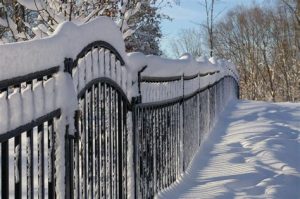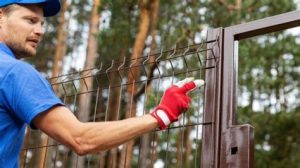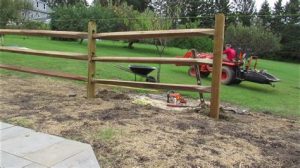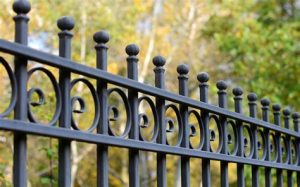Common Mistakes To Avoid When Installing Your Own Fence
Discover common mistakes in construction, including material choices, measurement errors, and overlooking soil conditions, to ensure a successful project outcome.Installing your own fence can be an empowering DIY project that enhances your property’s aesthetics and provides privacy and security. However, many first-time installers overlook essential factors that can lead to costly mistakes and setbacks. In this blog post, we will guide you through some common pitfalls to avoid when embarking on your fencing journey. From selecting the right materials to ensuring proper measurements and respecting property lines, these crucial elements are key to a successful installation. We will also delve into the importance of understanding soil and weather conditions, as well as the critical aspects of post installation. Whether you’re a seasoned DIY enthusiast or a complete novice, learning about these common mistakes can help you achieve a sturdy and visually appealing fence that stands the test of time. Let’s get started!
Choosing the Wrong Materials
When it comes to installing a fence, one of the most critical mistakes you can make is choosing the wrong materials. The materials you select will significantly impact the durability, maintenance, and overall appearance of your fence.
Different materials come with various characteristics, costs, and levels of maintenance. For instance, while wood may offer a natural aesthetic, it is susceptible to rot and insect damage if not properly treated. On the other hand, vinyl is durable and easy to maintain but may not provide the same traditional appeal. It’s essential to weigh the benefits and drawbacks before making a decision.
Moreover, consider your local climate. For areas with extreme weather, materials that can withstand harsh conditions should be prioritized. This consideration ensures your fence remains functional and attractive throughout the seasons, saving you time and money on repairs in the long run.
Improper Measurements and Alignment
One of the most critical aspects of fence installation is ensuring proper measurements and alignment. Failing to measure accurately can lead to a host of problems, including uneven panels, gaps, and structural weaknesses. It’s essential to take your time during this phase of the project to avoid expensive mistakes.
Begin by determining the exact location where your fence will be installed. Use high-quality tools like a measuring tape and a laser level to achieve precise measurements. Mark the positions for the fence posts and make sure they are equally spaced according to the fence design. Remember, accuracy in measurements directly affects the overall look and functionality of your fence.
Additionally, it’s crucial to check the alignment of your fence regularly as you work. Use a string line or a similar tool to maintain a straight line throughout the installation process. This practice helps in achieving a visually appealing fence that stands strong over time, minimizing the risk of misalignment issues that may require costly corrections later on.
Neglecting Property Lines and Permits
One of the most common and critical mistakes DIY fence installers make is neglecting property lines and permits. Understanding where your property begins and ends is essential not just to avoid disputes with neighbors, but also to comply with local regulations. Failing to verify these details can lead to costly mistakes, including the removal of a newly installed fence.
Before starting your project, check your property deed or consult with a land surveyor to confirm your boundaries. A simple misunderstanding can result in encroaching on a neighbor’s land, leading to legal issues. Additionally, certain areas may have zoning regulations that dictate how close to the property line a fence can be built. This is where obtaining the proper permits comes into play; ignoring this step can result in fines or the requirement to remove your fence altogether.
Furthermore, even if you know your property lines, it’s important to verify local building codes regarding fence heights, materials, and styles allowed in your area.
Overlooking Soil and Weather Conditions
When it comes to installing a fence, many homeowners focus primarily on aesthetic appeal and functionality. However, overlooking soil and weather conditions can lead to unforeseen issues that may affect both the durability and stability of your fence. It is crucial to consider these factors before diving into the installation process.
Before you set your posts, you should assess the type of soil in your yard. Different soil types hold water differently and impact how well your fence can withstand elements such as wind and rain. For example, clay soils retain water, which can lead to post rot if not properly managed, while sandy soils drain well, requiring deeper postholes.
Weather conditions also play a critical role in the installation process. If you install your fence during the wet season, the ground may be softer and more prone to movement. Similarly, during dry seasons, if ground conditions are too hard, it could be challenging to dig the postholes. Checking the forecast and planning your installation around these factors will help ensure a more secure and long-lasting fence.
| Soil Type | Implications for Fence Installation |
|---|---|
| Clay Soil | Holds water; risk of post rot |
| Sandy Soil | Drains well; may require deeper holes |
| Loamy Soil | Ideal for installation; balanced drainage |
Inadequate Post Installation and Support
When it comes to installing a fence, one of the most critical mistakes homeowners can make is related to inadequate post installation and support. The strength and stability of your fence largely depend on how well the posts are set. Failing to install them properly can lead to a range of problems, from leaning panels to complete structural failure.
- Dig Deep Enough Holes: Posts should be set deep enough to allow for a stable foundation. Generally, this means digging at least one-third of the post’s length into the ground.
- Use Concrete for Support: While it may be tempting to simply pack the soil around the post, using concrete will provide additional strength and durability.
- Check for Level: Before the concrete sets, always check that your posts are perfectly vertical. Use a level to ensure they align correctly, preventing future problems.
Additionally, it’s important to consider local weather conditions and soil types when planning your post installation.
Frequently Asked Questions
What are some common mistakes people make when measuring for a fence?
A common mistake is not accounting for property lines, which can lead to installing a fence over a neighbor’s property. Always verify the boundaries before starting.
Why is it important to check local regulations before installing a fence?
Local regulations may have specific requirements regarding fence height, materials, and placement, and failing to adhere to these could result in fines or the need to remove the fence.
What types of materials should I consider for my fence?
It’s important to understand the pros and cons of various materials like wood, vinyl, aluminum, and chain-link. This helps you choose one that fits both your aesthetic preference and functional needs.
What mistake should I avoid when choosing a fence design?
One common mistake is choosing a design that does not complement your home or yard. Research various styles and consider the neighborhood aesthetic to ensure a coherent look.
How can improper planning affect my fence installation?
Improper planning can lead to issues such as incorrect post spacing or inadequate gate size, resulting in a fence that doesn’t function as intended or looks aesthetically unpleasing.
What is the importance of knowing the type of soil in my yard?
Understanding the type of soil helps in determining the stability of the fence posts. For example, sandy soil requires different installation techniques compared to clay or rocky soil.
Why should I avoid rushing the installation process?
Rushing can lead to errors such as uneven post heights, misaligned panels, or not allowing for proper concrete curing time, all of which can compromise the fence’s longevity and appearance.





